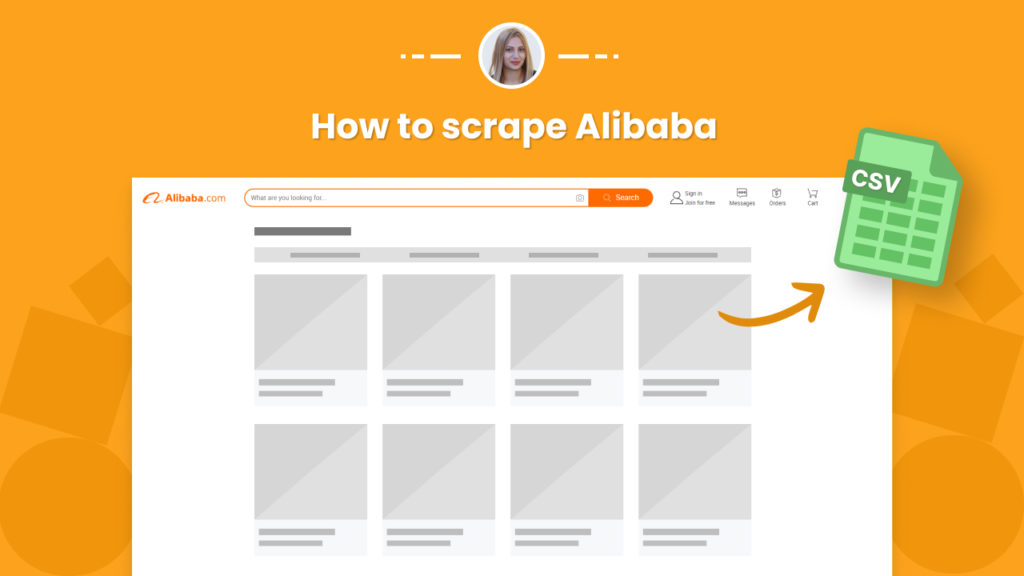Alibaba is a Chinese multinational conglomerate specializing in e-commerce, retail, Internet, and technology. Founded in 1999 by Jack Ma, Alibaba is one of the world’s largest online and mobile commerce companies. The company operates in over 190 countries and regions, and has over 400 million active users.
It is one of the main platforms operated by the Alibaba Group and is primarily aimed at small and medium-sized businesses (SMBs) looking to source products from China.
On Alibaba.com, buyers can search for and find a wide range of products, including electronics, machinery, clothing, and textiles, among others.
They can also communicate directly with suppliers, negotiate prices, and place orders online.
Additionally, the platform offers various services such as inspection and logistics to help facilitate trade between international buyers and Chinese suppliers.
Scraping data from Alibaba can provide a ton of benefits for businesses including:
Market research: By scraping data from Alibaba companies are capable of gaining insight into the products and suppliers that are popular in their industry, as well as pricing trends and other market information.
Sourcing: By scraping data on suppliers and products, you can create a list of suppliers and their pricing data.
Price monitoring: By scraping data on prices, businesses can monitor price changes of products they sell and adjust their prices accordingly.
Lead generation: Scraping data from Alibaba.com can provide a list of potential suppliers and manufacturers.
However, the manual extraction of data from Alibaba can be extremely time-consuming.
In this tutorial, we will demonstrate how to use Hexomatic to scrape tons of data from Alibaba with just a few clicks.
You will particularly learn:
#1 How to scrape Alibaba product search listings
#2 How to scrape Alibaba single product pages
You can then combine the workflows and have a comprehensive data sheet for product research, competitor research, price monitoring, etc.
To get started, you need to have a Hexomatic.com account.
#1 How to scrape Alibaba product search listings
First, let’s see how to automatically scrape product listings from Alibaba using the public scraping recipe templates of Hexomatic.
Step 1: Go to the Library of Scraping Templates
From your dashboard, select Scraping Templates to access the public scraping recipes.

Step 2: Capture the desired category page URL(s)
Go to https://www.alibaba.com/ and capture the desired page URL(s).
For example,

Step 3: Add the “Alibaba listings” recipe
From the Scraping Templates, select the “Alibaba listings” recipe and choose the “Use in a workflow” option.
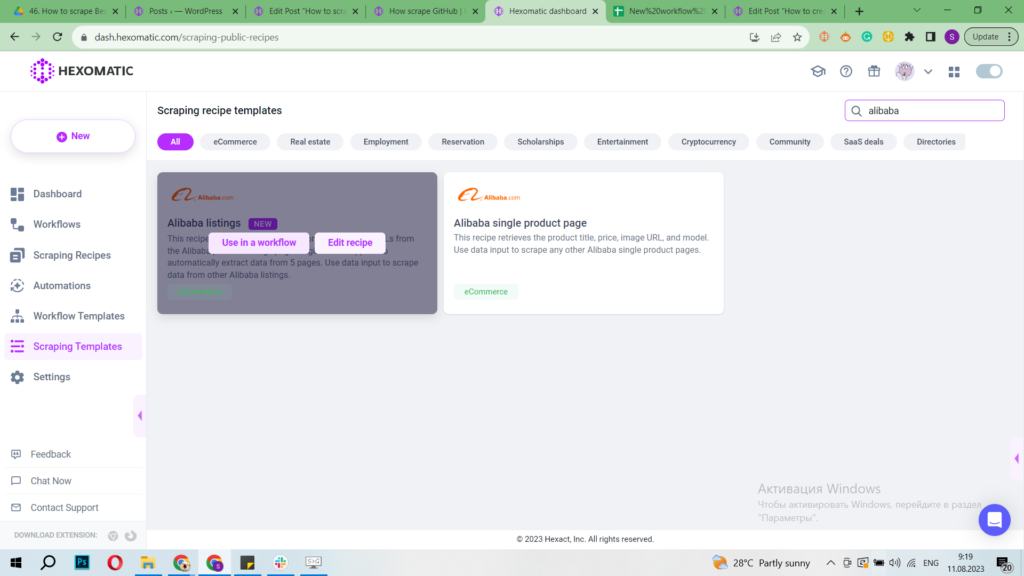
Step 4: Add the captured page URLs
Once the workflow is created, choose the Data Input automation and add the previously captured page URL(s) using the Manual paste/list of inputs option. You can add a single URL or bulk URLs.

Then, click Continue.
Step 5: Run the workflow
You can run the workflow by clicking “Run now”.
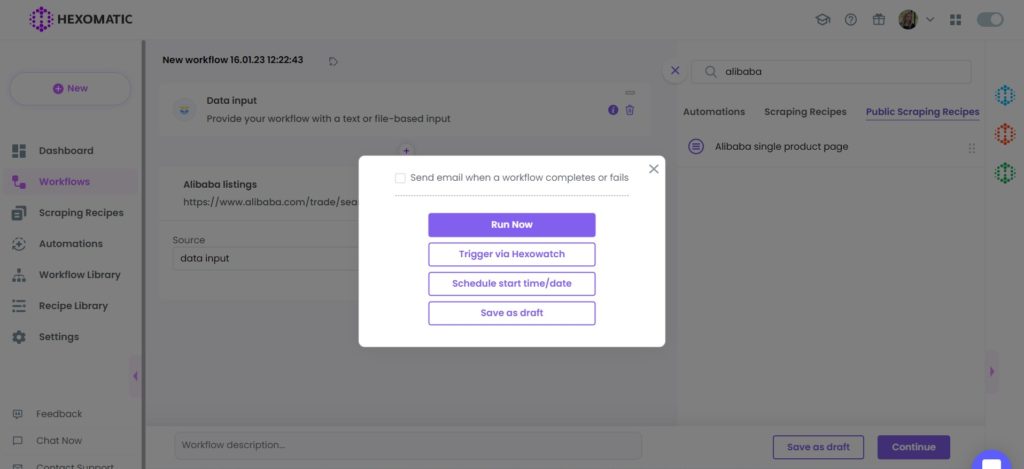
Step 6: View and Save the results
Once the workflow has finished running, you can view the results and export them to CSV or Google Sheets.
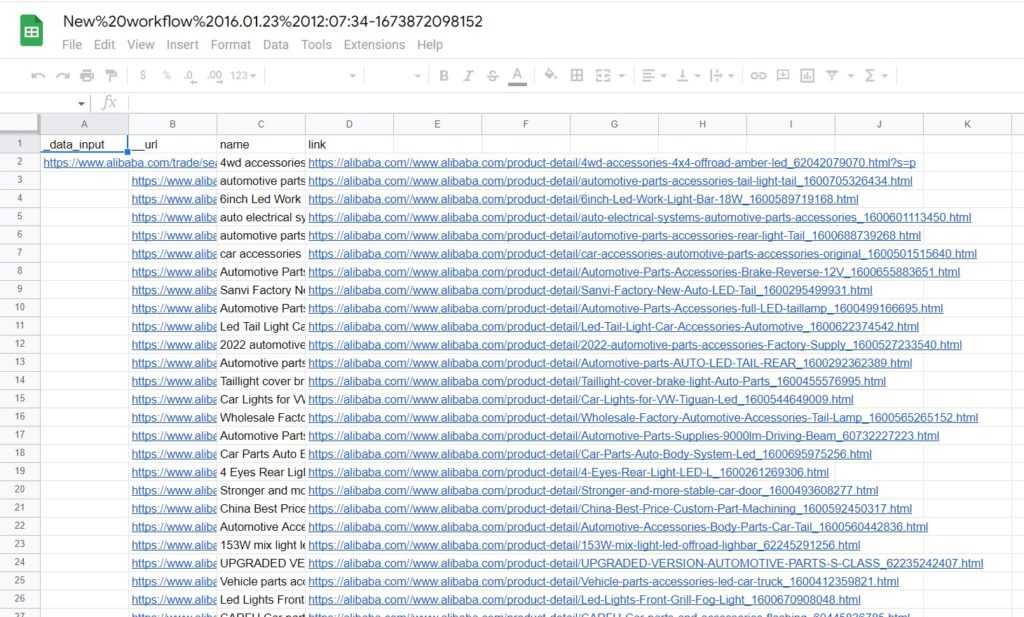
#2 How to scrape Alibaba product pages
Now, let’s get to scraping detailed data from any Alibaba product page using the 2nd public scraping recipe. With this recipe, you can automatically scrape product names, descriptions, prices, etc.
Step 1: Go to the Library of Scraping Templates
From your dashboard, select Scraping Templates to access the public scraping recipes.

Step 2: Capture the desired page URL(s)
Go to https://www.alibaba.com/ and capture the desired page URL(s).
For example,
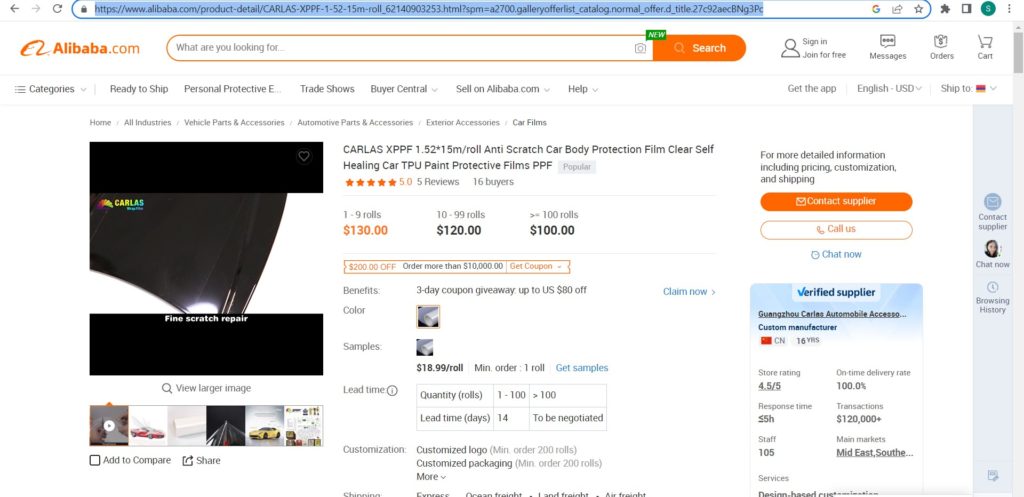
Step 3: Add the “Alibaba single product page” recipe
From the Scraping Templates, select the “Alibaba single product page” recipe and choose the “Use in a workflow” option.
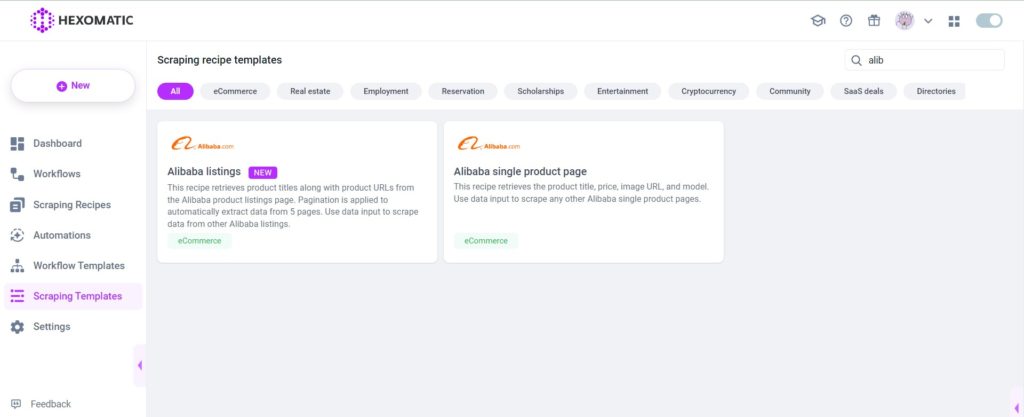
Step 4: Add the captured page URLs
Once the workflow is created, add the Data Input automation. Then, add the previously captured page URL(s) using the Manual paste/ list of inputs option. You can add a single URL or bulk URLs.
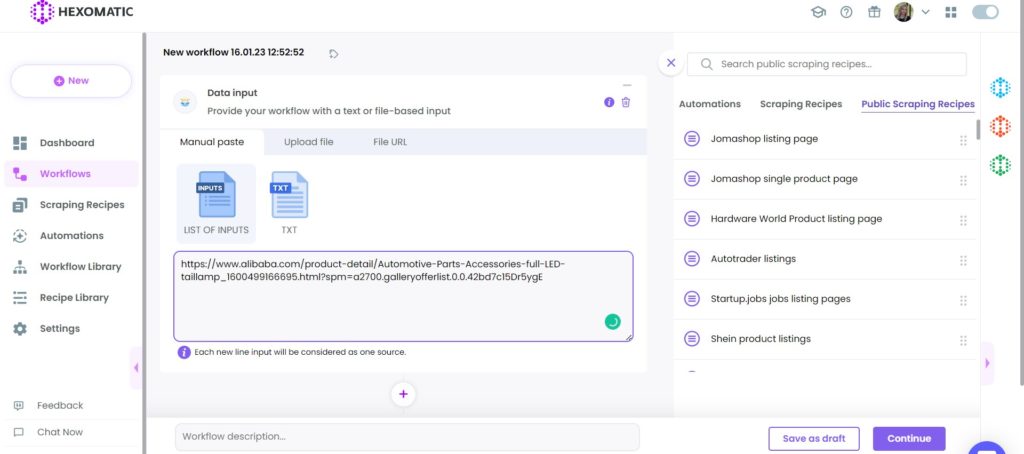
Step 5: Run the workflow
You can run the workflow by clicking “Run now”.

Step 6: View and Save the results
Once the workflow has finished running, you can view the results and export them to CSV or Google Sheets.
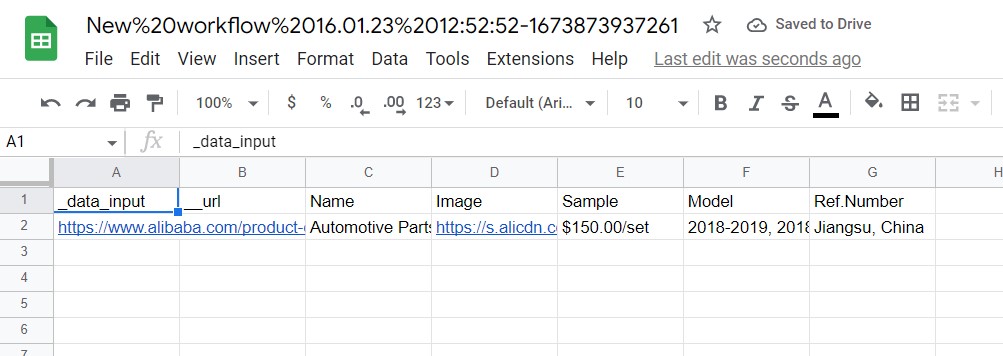
Automate & scale time-consuming tasks like never before

Marketing Specialist | Content Writer
Experienced in SaaS content writing, helps customers to automate time-consuming tasks and solve complex scraping cases with step-by-step tutorials and in depth-articles.
Follow me on Linkedin for more SaaS content
